| Takahatenamun in hieroglyphs | ||||||||||||
|---|---|---|---|---|---|---|---|---|---|---|---|---|
King’s Wife and King's Sister of Taharqa | ||||||||||||
 | ||||||||||||

Takahatenamun (Takahatamun, Takhahatamani) was a Nubian queen dated to the Twenty-fifth Dynasty of Egypt. [2]
| Takahatenamun in hieroglyphs | ||||||||||||
|---|---|---|---|---|---|---|---|---|---|---|---|---|
King’s Wife and King's Sister of Taharqa | ||||||||||||
 | ||||||||||||

Takahatenamun (Takahatamun, Takhahatamani) was a Nubian queen dated to the Twenty-fifth Dynasty of Egypt. [2]
Takahat(en)amun was the daughter of King Piye and the sister-wife of King Taharqa. She held several titles: Noble Lady (iryt p't), Great of Praises (wrt hzwt), King's Wife (hmt niswt), Lady of All Women (hnwt hmwt nbwt), and King's Sister (snt niswt). [3]
Takahat(en)amun is known from a temple scene of the temple of Mut in Gebel Barkal where she is shown standing behind Taharqa who is offering to Amun-Re and Mut. [2] [3]
George Andrew Reisner proposed that Takatamun might have been buried in Nuri in Tomb 21. The tomb is dated, however, to the time of King Senkamanisken, meaning that the queen would have had to have died in her seventies or later if she were buried there. [4]

Nefertari, also known as Nefertari Meritmut, was an Egyptian queen and the first of the Great Royal Wives of Ramesses the Great. Nefertari means 'beautiful companion' and Meritmut means 'Beloved of [the goddess] Mut'. She is one of the best known Egyptian queens, among such women as Cleopatra, Nefertiti, and Hatshepsut, and one of the most prominent not known or thought to have reigned in her own right. She was highly educated and able to both read and write hieroglyphs, a very rare skill at the time. She used these skills in her diplomatic work, corresponding with other prominent royals of the time. Her lavishly decorated tomb, QV66, is one of the largest and most spectacular in the Valley of the Queens. Ramesses also constructed a temple for her at Abu Simbel next to his colossal monument there.
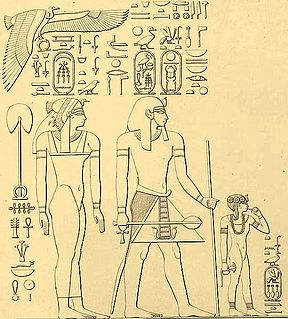
Ahmose was an ancient Egyptian queen in the Eighteenth Dynasty. She was the Great Royal Wife of the dynasty's third pharaoh, Thutmose I, and the mother of the queen and pharaoh Hatshepsut. Her name means "Born of the Moon".
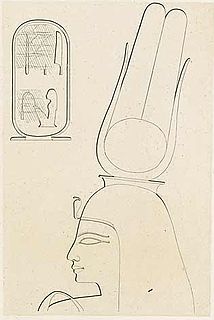
Tey was the Great Royal Wife of Kheperkheprure Ay, who was the penultimate pharaoh of Ancient Egypt's Eighteenth Dynasty. She also had been the wet nurse of Nefertiti.

Sitre or Tia-Sitre, was the Great Royal Wife of Pharaoh Ramesses I of Egypt and mother of Seti I.

Bintanath was the firstborn daughter and later Great Royal Wife of the Egyptian Pharaoh Ramesses II.

Mutnedjmet, also spelled Mutnedjemet, Mutnodjmet, Mutnodjemet was an ancient Egyptian queen, the Great Royal Wife of Horemheb, the last ruler of the 18th Dynasty. The name, Mutnedjmet, translates as: The sweet Mut.

Ahmose-Meritamun was a Queen of Egypt during the early Eighteenth Dynasty. She was both the older sister and the wife of Pharaoh Amenhotep I. She died fairly young and was buried in tomb TT358 in Deir el-Bahari.

Ahmose-Henuttamehu was a princess and queen of the late 17th-early 18th dynasties of Egypt.
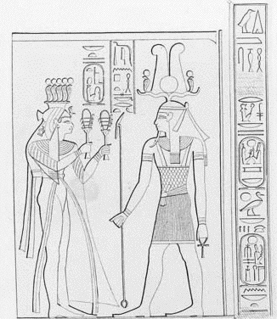
Iset Ta-Hemdjert or Isis Ta-Hemdjert, simply called Isis in her tomb, was an ancient Egyptian queen of the Twentieth Dynasty; the Great Royal Wife of Ramesses III and the Royal Mother of Ramesses VI.

Duathathor-Henuttawy, Henuttawy or Henttawy("Adorer of Hathor; Mistress of the Two Lands") was an ancient Egyptian princess and later queen.
Iput was an ancient Egyptian queen consort of the Sixth Dynasty, a sister and wife of Pepi II.
Khuit II was a wife of King Teti, the first pharaoh of the Sixth Dynasty of Egypt.

Isetnofret was a royal woman of Ancient Egypt and, as the Great Royal Wife of Pharaoh Merenptah, she became Isetnofret II.
Tabiry was a Nubian queen dated to the Twenty-fifth Dynasty of Egypt.
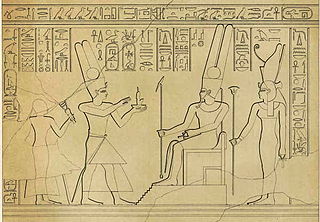
Abar was a Nubian queen of the Kingdom of Kush dated to the Twenty-fifth Dynasty of Egypt. She is known from a series of stela found in Sudan and Egypt. Her appearances mark her as the niece of King Alara of Nubia, married to King Piye and the mother of King Taharqa.
Khensa (Khenensaiuw) was a Nubian queen dated to the Twenty-fifth Dynasty of Egypt.
Naparaye was a Nubian queen dated to the Twenty-fifth Dynasty of Egypt.

Henhenet was an ancient Egyptian queen consort, a lower ranking wife of Pharaoh Mentuhotep II of the 11th dynasty. Her tomb (DBXI.11) and small decorated chapel were found in her husband's Deir el-Bahari temple complex, behind the main building, along with the tombs of five other ladies, Ashayet, Kawit, Kemsit, Sadeh and Mayet. Most of them were priestesses of Hathor, so it is possible that they were buried there as part of the goddess's cult, but it is also possible that they were the daughters of nobles the king wanted to keep an eye upon.
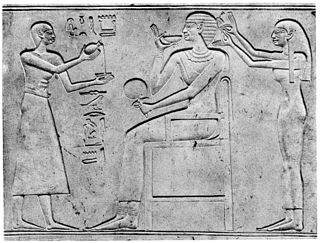
Kawit was an ancient Egyptian queen consort, a lower ranking wife of Pharaoh Mentuhotep II of the 11th Dynasty. Her tomb (DBXI.9) and small decorated chapel were found in her husband's Deir el-Bahari temple complex, behind the main building, along with the tombs of five other ladies, Ashayet, Henhenet, Kemsit, Sadeh and Mayet. She and three other women of the six bore queenly titles, and most of them were [[priestess of Hathor|priestesses of Hathor, so it is possible that they were buried there as part of the goddess's cult, but it is also possible that they were the daughters of nobles the king wanted to keep an eye upon.

Kemsit was an ancient Egyptian queen consort, the wife of pharaoh Mentuhotep II of the 11th Dynasty. Her tomb (TT308) and small decorated chapel were found in her husband's Deir el-Bahari temple complex, behind the main building, along with the tombs of five other ladies, Ashayet, Henhenet, Kawit, Sadeh and Mayet. Most of them were priestesses of Hathor, so it is possible that they were buried there as part of the goddess's cult, but it is also possible that they were the daughters of nobles the king wanted to keep an eye upon.